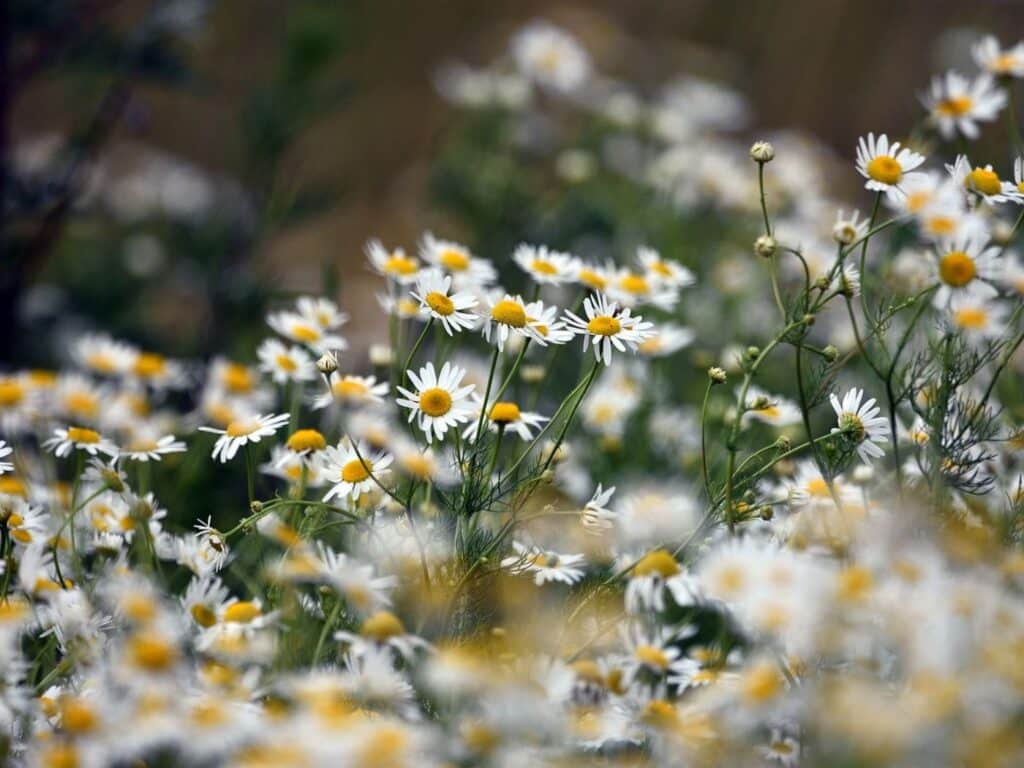Chamomile (Matricaria chamomilla) is among the best fruit or vegetable garden herbs. This herb is excellent for attracting beneficial insects, has antifungal properties, and can help repel insect pests that can harm your vegetable garden. This helpful plant will also add nutrients like nitrogen to the soil, boosting the development of nutrient-hungry plant varieties.
Many farmers also believe that chamomile enhances the taste of fruits and vegetables that grow around it. As a bonus, you can use this herb to create calming chamomile or other herbal tea varieties.
Since this herb has so many benefits, it is best to grow it along with plant species that will benefit the most from chamomile’s unique abilities. This guide will look at the best companion plants to include in your garden bed.
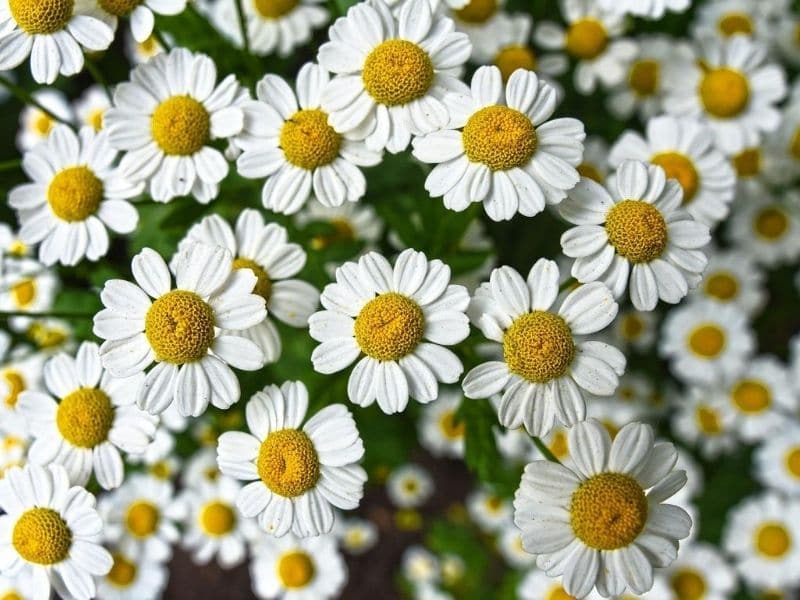
What to Grow With Chamomile
Chamomile can be grown in an ornamental, herb, or vegetable garden because it is attractive and gets along with many plant species.
When doing matchmaking, you should carefully select plant varieties that grow well in the same environment as chamomile.
This perennial herb grows well in raised beds, containers, and in-ground gardens. It flourishes in full sun but can also benefit from a bit of afternoon shade in hot climates. The herb requires fertile soil that drains properly; too much moisture can damage its root system.
However, some plants benefit a little more from this type of pairing than others. Look at some of the best companion plants to grow when you plant chamomile.
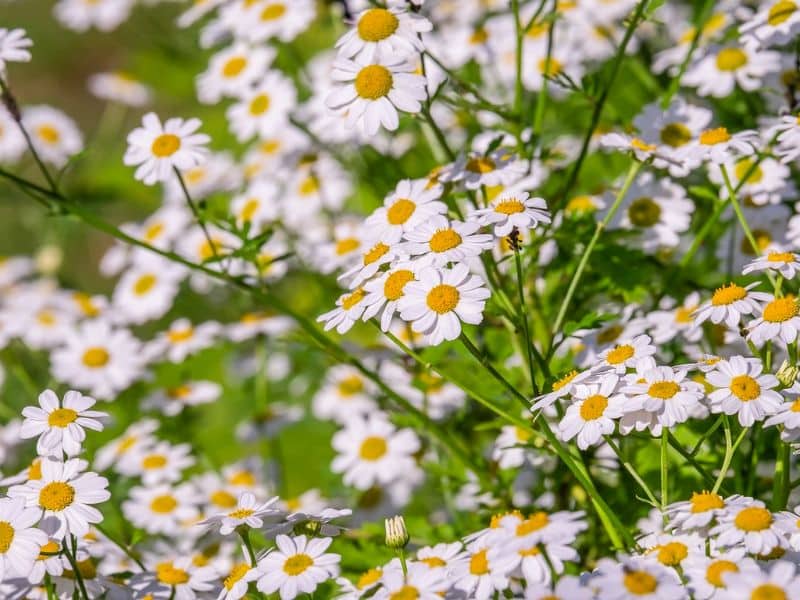
Fruit Trees
Many fruit tree farmers plant chamomile in their orchards because the herb can boost the growth of these trees and will improve the flavor of the fruits. Chamomile also has anti-bacterial and anti-fungal properties that can keep fruit trees healthy for longer.
You can grow chamomile around just about any type of fruit tree including apple trees, peach trees, cherry trees, and many other fruit trees. The daisy-like flowers will look charming underneath these trees and will benefit from the shade provided by the trees on hot summer days.
When you are adding chamomile underneath fruit trees you should be mindful not to grow it in areas where there is too much shade. Chamomile can survive in shaded areas but it won’t produce flowers if it doesn’t get direct sunlight.
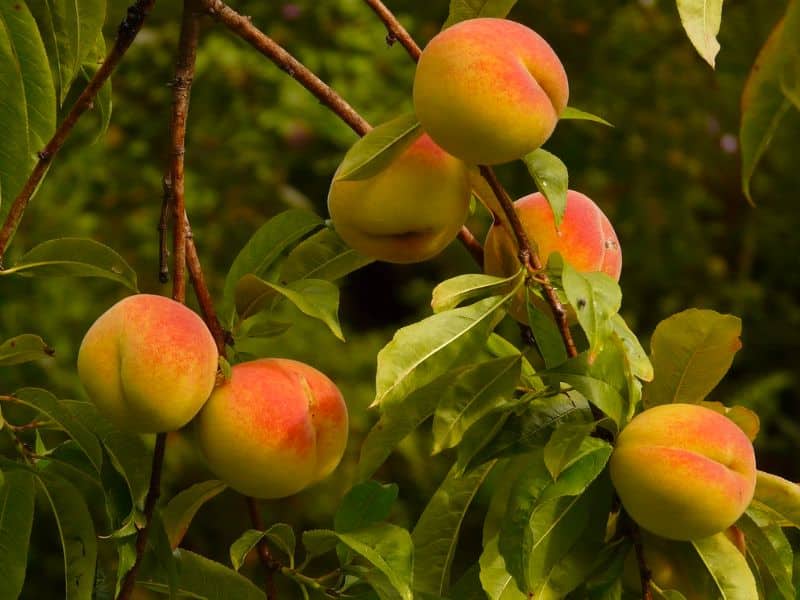
Carrots
Carrots (Daucus) are vegetables that carrot flies or the carrot root fly often plagues. Adding chamomile to a carrot bed will help deter the carrot fly by masking the scent of carrots so these pests won’t ruin your crop. The beautiful chamomile blooms will also look striking when growing amongst your carrots.
Carrots can grow well in the same area as chamomile because these root vegetables need full sun and grow well in fertile and well-draining soil. The two plants also have similar watering requirements.
Growing Roman chamomile or German chamomile between or around your carrots is best. This way, your carrots will still receive plenty of sunlight, and the chamomile fragrance can properly mask the carrot’s scent.
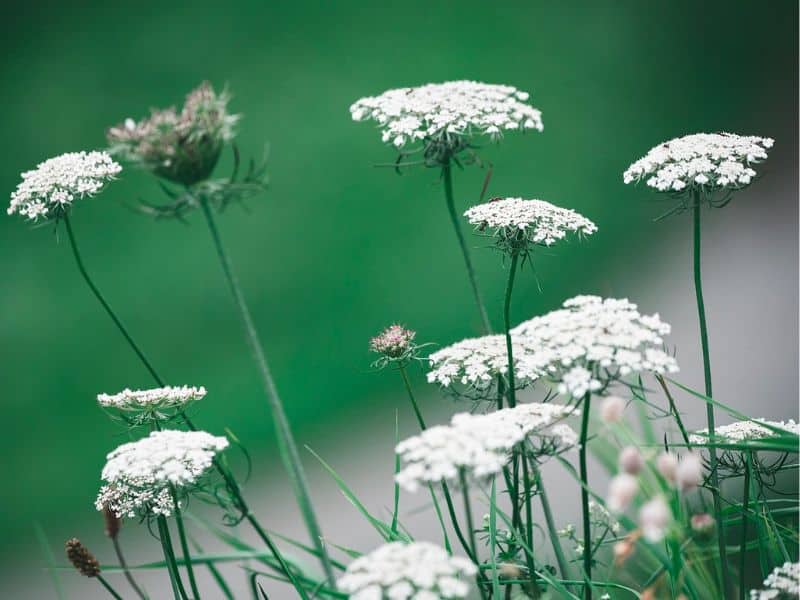
Tomatoes
Tomato plants (Solanum lycopersicum) are also good companion plants for chamomile because the chamomile flowers will look beautiful alongside tomatoes, and these vegetables will grow more vigorously.
Chamomile can also protect your tomatoes from pests like aphids because it will attract beneficial insects like ladybugs that feed on these tomato pests.
Tomatoes grow well in full sun and flourish in well-draining soil types. Chamomile is shorter than most tomato varieties. It is best to grow chamomile between tomato stools or establish it in a row before the tomatoes.
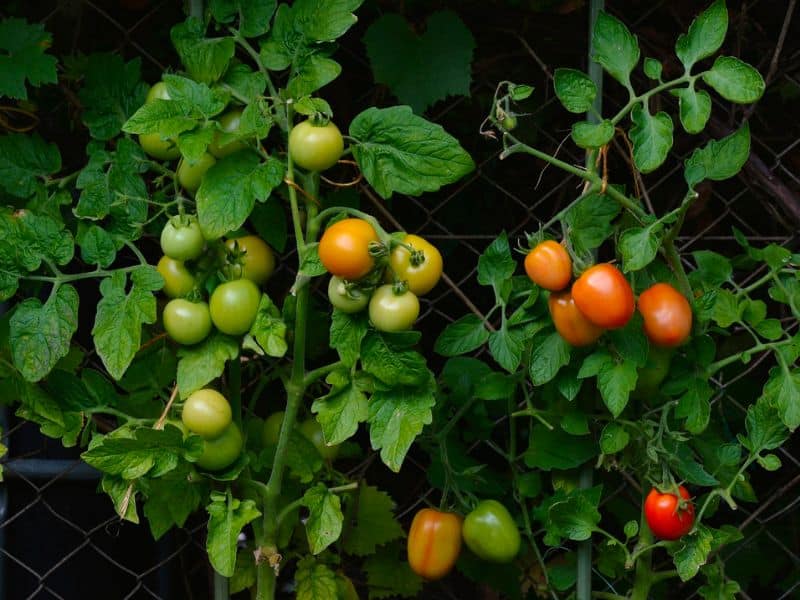
Brassicas
All members of the brassica family (Brassicaceae) can benefit a great deal from chamomile. This herb is a great tool to separate the different brassica family members so the powerful scent of varieties like cabbages, broccoli, cauliflower, and Brussels sprouts won’t attract too many common cabbage pests.
Chamomile also replenishes the soil with nitrogen that can help the nutrient-hungry brassicas thrive. Brassicas will grow well with chamomile planted near them because they also need plenty of sunlight and well-draining soil.
The best way to grow chamomile and brassicas is by adding them in lanes next to one another so the chamomile can separate the brassica family.
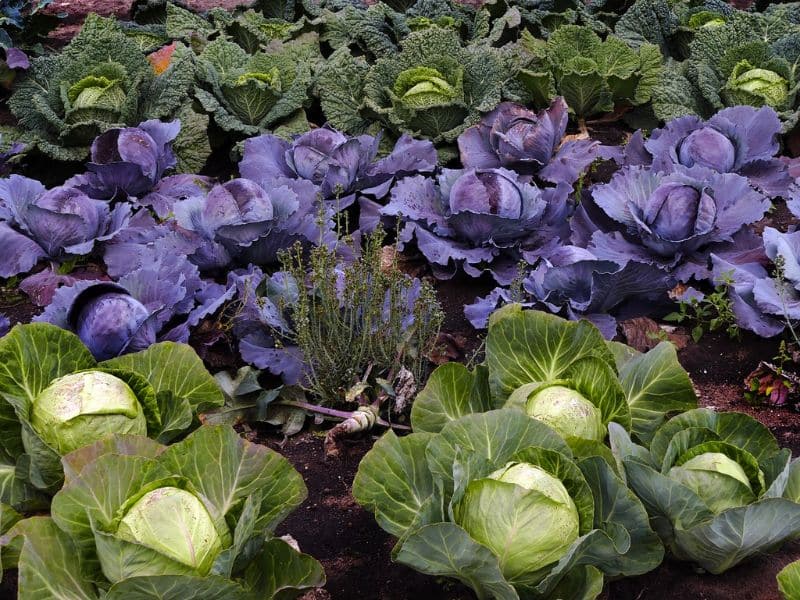
Cucumber
Cucumber plants (Cucumis sativus) are also good chamomile companion plants because the chamomile will help deter pests like cucumber beetles that can ruin your crop. The herb’s antifungal properties can also prevent fungal infections and powdery fungi that commonly affect cucumber plants.
Chamomile will also attract pollinators that can increase your yields, and the cucumbers you produce will taste a lot better because chamomile improves the growth and flavor of plants you grow next to them.
Cucumbers flourish in direct sunlight and require the same well-draining soil that chamomile loves.
The best way to plant these two plants is by trailing the cucumbers away so they won’t take up too much space. This trailing will create some partial shade that can protect the chamomile from scorching sun rays on warmer days.
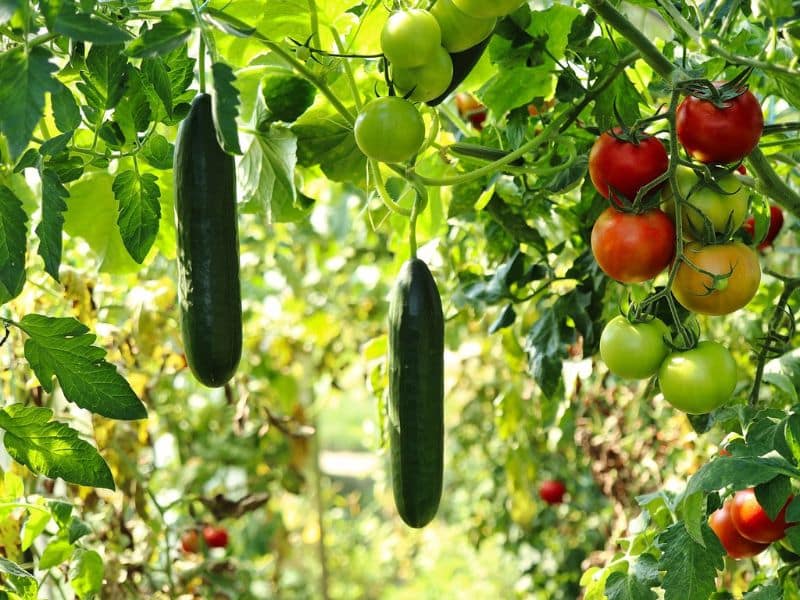
What NOT to Grow With Chamomile
Not all plants will grow well alongside chamomile because they are either affected by the fragrant effects of chamomile or just don’t grow well in the same conditions. Let’s take a look at some bad companion plants to avoid when growing chamomile.
Mint
Other members of the mint family are not good chamomile companions because the chamomile can keep these herbs from producing oils, and they will no longer smell minty. This reduces the mint herbs’ ability to deter other pests plaguing your garden. It is best to separate these herbs if you want a powerful garden.
Parsley and Parsnips
Parsley and parsnips are poor companions because they attract the same pests and can result in a large infestation for your other crops. It is best to avoid pairing too many of these species in the same garden.
Final Thoughts
Chamomile is helpful for much more than just herbal tea and essential oils. As a companion, chamomile can offer many incredible benefits to other plants. You can grow the herb with tomatoes, carrots, cucumbers, brassicas, fruit tree varieties, and many plant species.
We hope this guide made it easier to find suitable companions to add to your garden, and if you are looking for more advice, look at some of our other guides to learn even more about companion planting.

